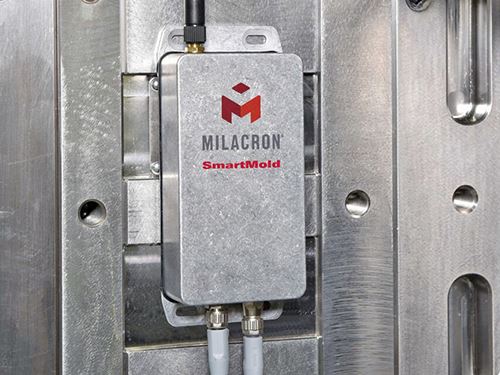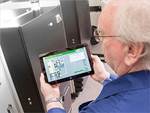Milacron’s Industry 4.0 Initiative on Display at K 2016
Transforming the mold from a "dumb" component to an active element of the Smart Cell in the Smart Factory.
The latest results of a multi-year development effort toward Industry 4.0, the shorthand term for an era of smart, interconnected machines, will be shown by Milacron at this month’s K 2016 fair in Dusseldorf. As explained by Kevin Bamford, director of controls products for Milacron’s Mold-Masters product brand, “We started with the concept of the Smart Cell—different pieces of equipment talking to each other to improve process quality and efficiency, and conveying better information about those metrics than we can currently get from individual machines. We realized that a key piece of the process is the mold, which today is ‘dumb,’ with no intelligence other than signals from cavity-pressure sensors.”
That was the genesis of the Smart Mold project, which Milacron has been developing in concert with key customers. The goal is to turn the mold into a “smart connected device that collects data, has some internal logic functions, and reports the data through a local server into the cloud or via local-area network,” says Bamford. This Smart Mold device is a sealed metal box measuring 2×4×1 in., which can be linked to sensors in the hot half of the mold. It is attached to the hot half next to the hot-runner connector box or on the bottom of the tool. It contains a wireless web server and an OPC-UA server (Open Platform Communications—Unified Architecture), the emerging standard protocol for Industry 4.0. Also embedded in Smart Mold is software for setup management, preventive-maintenance routines, engineering change records, and data reporting. Setup management, as explained by Bryan Phillips, Mold-Masters controls product development manager, is the ability to store and load setup parameters for the mold, hot runner, and an auxiliary injector in the case of multicomponent molding—all associated with the particular tool in the cell.
The second-generation Smart Mold will appear at K 2016 in at least three Milacron exhibits. An operating MPET system molding PET preforms will load the hot-runner settings from Smart Mold to the Mold-Masters iM2 hot-runner control. Smart Mold will also appear on a display of the Mold-Masters Summit valve-gate system.
A third exhibit will show off a brand-new product that controls six servo axes on the mold—valve gates, top and bottom stripper plates, and two rotary axes such as a spin stack or rotary table, and an index plate. It can also integrate an auxiliary injection-unit control (for example, Milacron’s all-electric portable E-Multi injector). This new control will appear on a mold set up to dry cycle outside a machine in the Milacron booth at K 2016.
Smart Mold is still a developmental product, currently in beta testing on some 30 molds operating at a handful of customers. Since the start of 2016, Milacron has supplied all high-cavitation PET preform tools and coinjection molds with sensors for customers who want to participate in Smart Mold development. Those sensors currently measure data related to overall equipment effectiveness (OEE), though Milacron is experimenting with other sensor technologies. Bamford and Phillips expect commercial sales of Smart Mold to begin in 2017.
Related Content
-
Four Industry 4.0 Tech Adoption Insights from Indiana Plastics Manufacturers
As more plastics manufacturers step into the Fourth Industrial Revolution, insights have emerged about how best to approach the digital transformation journey.
-
Beyond the Work Center: Using MES for Data-Driven Decisions Across Manufacturing Operations
Move past “is the job running” and “will it finish on time,” and apply MES to inform workflows ranging from accounting, inventory control, planning, material logistics, quality assurance, engineering and shipping.
-
Automation in Thermoforming on the Rise
Equipment suppliers’ latest innovations exemplify this trend driven by factors such as labor shortages, higher-speed thermoformers and tighter quality control.

















